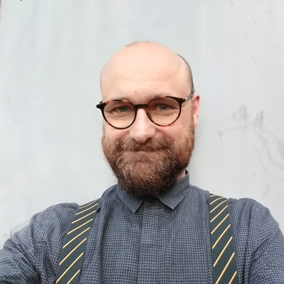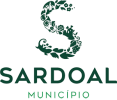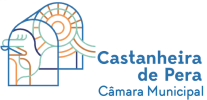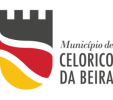Paulo Luis Almeida

Paulo Luis Almeida
nasceu em Moçambique. É Professor na FBAUP e investigador no i2ADS – Instituto de Investigação em Arte, Design e Sociedade.
Formou-se em Artes Plásticas – Pintura, FBAUP. Foi bolseiro da FCT e doutorou-se pela Universidad del País Vasco em 2009, com uma tese sobre as interferências de processos performativos nas práticas pictóricas contemporâneas.
Há alguns anos começou a realizar pequenas ações a partir do quotidiano, para ter motivos para desenhar e pintar. Estas intervenções não saiam do espaço doméstico da casa e da rua onde vivia, nunca eram anunciadas e raramente documentadas. Percebeu depois que também podia fazer desenhos e pinturas para evitar a exposição pública das intervenções e contornar a impossibilidade da sua realização; que desenhar podia ser outra forma de as levar a cabo.
Esta relação entre contextos performativos e objetos pictóricos passou a contaminar o seu trabalho, um ensaio visual contínuo em torno de micronarrativas do quotidiano (algumas das quais sem outra pretensão que não a de inventar fábulas para a vida de todos os dias). O trabalho, que se desdobra em desenho, pintura e performance, resulta de noções muito simples: a noção narrativa de prova; a repetição e deslocamento de gestos quotidianos; a transferência de ações entre contextos performativos e sociais.
[EN]
Paulo Luis Almeida
was born Mozambique. He is an Assistant Professor at the Faculty of Fine Arts in the University of Porto and a researcher in i2ADS – Research Institute in Art, Design and Society.
He graduated in Fine Arts – Painting, at the School of Fine Arts of the University of Porto. He was Research Fellow of the Foundation for Science and Technology and obtained his PhD from the University of the Basque Country in Spain in 2009, with a thesis on the interferences of performance-based methodologies in contemporary pictorial practices.
A few years ago he began to perform after everyday life spaces and events, as a motif for his drawings and paintings. These performances were focused on the domestic space of the house and street where he lived; they were never advertised and usually poorly documented. He then realized he could also draw and paint to avoid the public exposure of the performances and to escape the impossibility of carrying them out; that drawing could be another way of carrying them out.
This relationship between pictorial practice and performance contexts began to contaminate his work, a continuous visual essay around micro narratives of everyday life (some of which have no other intention than to invent fables and inscribe them in a quotidian experience). The work, which extends through drawings, paintings and performance, is defined by very simple notions: the narrative notion of test; the displacement of everyday life gestures; the transference of actions between performance contexts.





